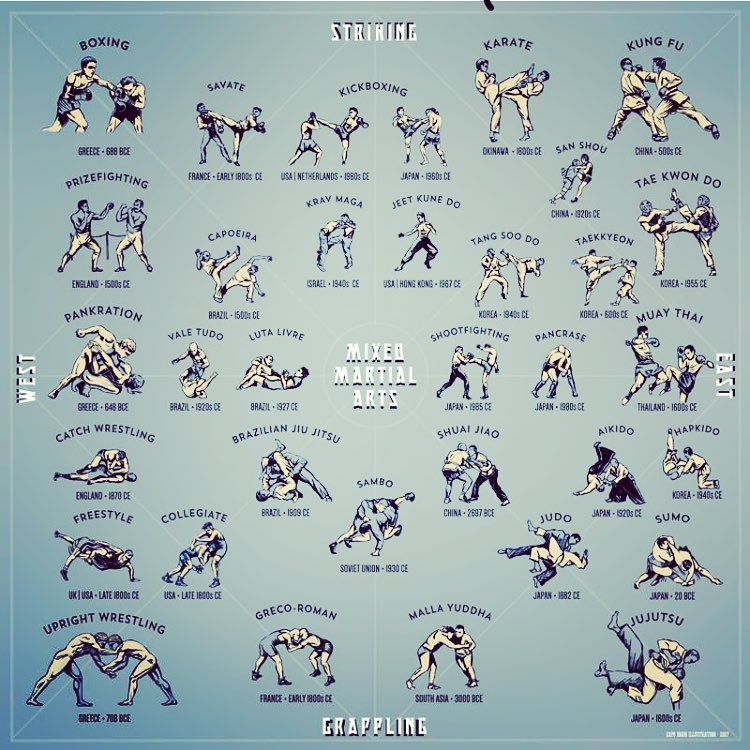When you consider martial arts, do you lean extra toward the typical methods or the modern-day fight sporting activities? simply click the following webpage offers special advantages and experiences, shaped by their viewpoints and training methods. Conventional martial arts emphasize personal growth and discipline, while modern battle sporting activities concentrate on competition and performance. Comprehending these differences can assist you in picking the best strategy for your trip. But how do these distinctions materialize in training and approach?
The Ideology and Background Behind Conventional Martial arts
While lots of people associate martial arts with physical fight, the ideology and history behind standard martial arts run much deeper. You'll locate that these self-controls emphasize personal development, technique, and regard.
Stemming from ancient practices, typical martial arts were commonly created for Self-Defense and spiritual development. They personify concepts such as balance, harmony, and self-discipline, assisting practitioners beyond plain combating skills.
As you educate, you'll not just learn techniques however likewise gain understandings right into the culture and values that shaped these arts. The routines and customs, usually given via generations, promote a sense of community and belonging.
The Competitive Nature of Modern Battle Sports
Modern fight sports have changed the landscape of martial arts into a highly competitive field, where athletes take on in an examination of skill, strategy, and endurance.
You'll see that competitors are frequently organized with rigorous guidelines and policies, making sure fair game and security. These events draw in large target markets, fueling the exhilaration and intensity of matchups.
Athletes train rigorously, not just for physical expertise but also for psychological toughness, recognizing that every detail counts in the ring. The adrenaline rush during competitions is apparent, as fighters press their restrictions to assert success.
https://andersontaztl.blogthisbiz.com/41262608/underneath-the-surface-of-each-martial-arts-session-exists-a-profound-trip-of-self-discovery-where-true-toughness-is-unveiled-are-you-prepared-to-embrace-the-makeover appreciate the athleticism and artistry involved, making modern fight sporting activities a thrilling phenomenon that remains to develop and captivate fanatics worldwide.
Training Methods and Strategies: A Relative Evaluation
The affordable ambience of modern-day combat sports demands cutting-edge training methods that vary dramatically from conventional martial arts.
In contemporary training, you'll concentrate on details strategies, competing, and conditioning, often utilizing drills that mimic actual fight circumstances. You'll see an emphasis on quantifiable performance and regular competition to evaluate your skills.
On the other hand, conventional martial arts prioritize kinds, katas, and thoughtful trainings, frequently highlighting discipline and respect over competition.
Training is typically much less extreme and may entail repetitive practice instead of real-time sparring.
While both approaches develop skill and fitness, modern-day combat sporting activities offer a more vibrant and versatile training atmosphere, preparing you for prompt challenges in the ring or cage.
Select the path that straightens with your objectives and rate of interests.
Verdict
In choosing between conventional martial arts and modern battle sporting activities, it truly boils down to what you value a lot of. If you're looking for individual growth, technique, and a sense of community, traditional arts might be your ideal fit. But if you prosper on competitors and real-time challenges, modern-day combat sports could be the means to go. Ultimately, both courses offer special advantages, so it's everything about straightening your training with your individual objectives and rate of interests.

 Danny Tamberelli Then & Now!
Danny Tamberelli Then & Now! Taran Noah Smith Then & Now!
Taran Noah Smith Then & Now! Jonathan Lipnicki Then & Now!
Jonathan Lipnicki Then & Now! Mackenzie Rosman Then & Now!
Mackenzie Rosman Then & Now! Macaulay Culkin Then & Now!
Macaulay Culkin Then & Now!